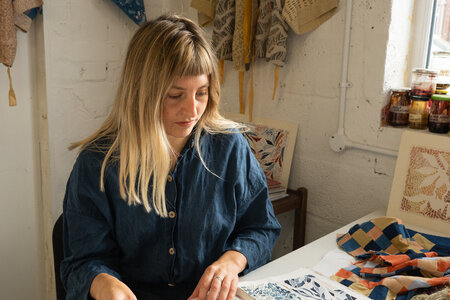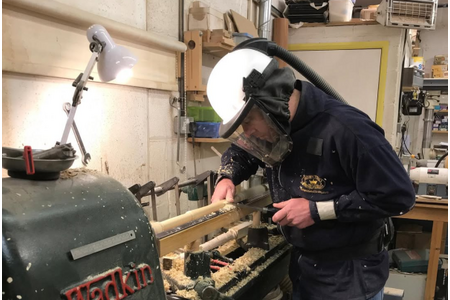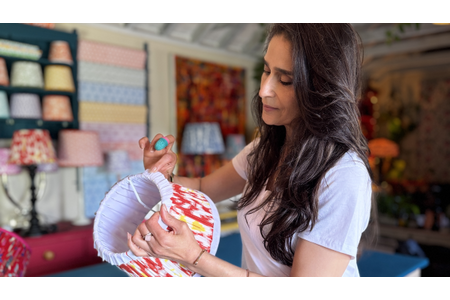Conserving Arms & Armour: In conversation with David Edge and Deborah Lee
We spoke with Arms & Armour Conservation course tutors David Edge and Deborah Lee about getting their footings in arms and armour conservation, why this holds such an importance and key challenges being faced in the industry right now.
Could you start by introducing yourselves and what you do?
David Edge: I am currently Armourer Emeritus at the Wallace Collection, having been its Armourer and Metals conservator since 1975, and for many years, Curator of Arms and Armour as well. I was appointed Head of Conservation in 2004. I have lectured and published widely on the history, conservation and analysis of arms and armour, and have always been a passionate advocate of museum education, founding the concept of armour-handling at the Wallace Collection and working with both schools and at university level to promote and encourage wider knowledge of the subject.
Deborah Lee: My name is Deborah and I am a Freelance Arms and Armour Conservator. I began work in this field in 1999 at the Wallace Collection, where David was my boss for close on 10 years, but then I decided to go freelance and have been working independently since 2008. I have a studio in Whitstable and a workshop in Bedfordshire, I split my time between working at the bench for clients from all over the world, museums, collectors, dealers and private collections and teaching and assessment work at West Dean.
What drew you to conservation in the first place?
DE: A love of historic objects, materials and material technology. I thought that a career in conservation would give me a closer and more ‘hands-on’ connection with historical artifacts (and I was right).
However, I actually came quite late to this realisation, and as a result my entire education up to and including university was all arts-based. Upon being appointed Metals Conservator/Armourer I had to be completely re-trained in museum conservation, at my employer’s cost in money and time, which would never happen nowadays. Their gamble did pay off, however… I worked for them for the next 45 years!
DL: To be honest, I didn’t even know conservation existed as a job before I went to university in London. I found three year degree , the Conservation and Restoration of Decorative Surfaces, at London Guildhall University purely by accident when I came back to England in my late 20s looking to go to University. I liked the sound of the course as it was a great mixture of science, hand skills and art history, I applied, got in and then in the 3rd year was sent to the Wallace Collection on a job placement, where I met David and fell in love with the world of arms and armour, which, up to that point, I had not even considered….the rest is history.
Between you, you have spent over 60 years working in the field – what are some of your memorable projects?
DE: Working as a trainee in the state apartments at Sandringham House, cleaning and installing wall-displays of arms and armour… and only just missing the Queen who came to have a look at what we were up to! And then of course there have been a seemingly endless procession of wonderful objects in collections all over the world which we got to see and handle out of their display cases… a real privilege.
DL: There have been many highlights and some projects that were memorable purely because of the sheer amount of work they involved. One example which encapsulates both for me was being asked to go out to Rajesthan and assess a large Royal Collection (about 1500 pieces), work out a conservation programme for all of it, and simultaneously set up a workshop from scratch and train 4 Indian conservation graduates to get everything done alongside me for publication in two large volume books... it was hard work and in difficult conditions, but I got it done and it was an amazing experience.
Why is it important to conserve arms and armour?
DE: Conserving arms and armour is crucial for a number of reasons, but in particular because it is often not appreciated by institutions holding such material that actually does need conserving and caring for. Even a basic lack of preventive conservation can ruin collections, and with ferrous objects, one cannot reverse corrosion damage once it has taken place. Additionally, arms and armour is particularly at risk from simple ignorance regarding how it should be treated: incorrect procedures can cause more damage than simple neglect.
DL: I would agree with David, it is important because, whether you like it or not, the development of arms and armour over the years has mirrored the progression of society, it provides a social and historical embodiment of societal changes and movements in political and social evolution. From a conservation point of view it is also a great vehicle for pushing Conservators out of their comfort zones, as one single piece of decorative arms and armour may involve the conservator being able to deal with many different materials, bone, ivory, precious metals, steel, leather and organic lacquer work…..it can all be encapsulated in one item, so it keeps you interested and pushes you to learn more.
What specific challenges do collections of arms and armour present in terms of their care, display and conservation?
DE: The nature of arms and armour is that it is often used for display within historic buildings whose interiors cannot be environmentally controlled, and due to difficulties of accessing such displays (often high up on walls etc) there is often a lack of personnel and resources devoted to regular programmes of maintenance. In addition, this whole field being associated many minds with ‘War and Death’, there is often a perception that there are worthier objects to spend money and resources on, so (sadly) arms/armour therefore often finds itself at the bottom of conservation priority lists.
DL: I would agree with David, but also it goes back to my earlier point, they are often complex objects not just in terms of their materials, but also with how they are viewed by modern society and the cultures from where they originated. You have to be mindful of a great many more things when dealing with arms and armour than you would for example when conserving a painting, and that I think is what sets it apart.
What should people expect from the Conservation of Arms and Armour course? Who is the course for?
DE: This course is for everyone with an interest in the subject, both inside and outside museums, and both professional or amateur. The idea is to give delegates a thorough grounding in different categories of arms and armour, and the problems and challenges that they can present. The course is presented as informally and as ‘hands-on’ as possible.
DL: Yes, I would agree with that. We want people to go away with a far greater understanding of the subject as a whole and to have gained an insight into its complexities and to have had the opportunity to pick our brains and share some stories.


